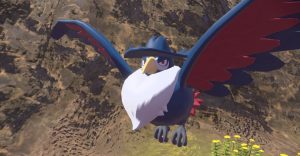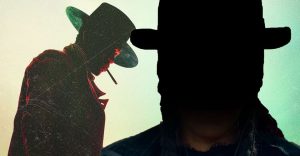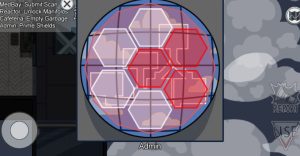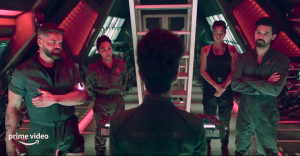Dying Light 2 Interview: Tymon Smektała

In 2016, Techland began development on Dying Light 2 while also continuing to support the first game. After numerous delays and development hiccups, Dying Light 2 was released to great reviews and a warm reception from fans. Although some felt it wasn’t the extremely refined game that they had seen at E3 2019, it was still a solid sequel to its 2015 predecessor.
Now, Techland is looking to the future. Even to this day, the first Dying Light is getting new content updates and seems to have life left in it. Given the community supported the original title for so long, Techland was happy to produce new content for it and it will do the same for Dying Light 2. The developer has pledged five years of post-launch support, meaning Dying Light 2 will be an active game until at least 2027.
In a new interview with Screen Rant, Lead Game Designer Tymon Smektała talked about the game’s lengthy production, Dying Light 2‘s infamous and ambitious E3 demo, cut content, and what the future of the series looks like. Although the interview is light on spoilers, those who haven’t finished the game and want to preserve their experience should come back to this interview at a later date.

It’s been a long road to get here, there was speculation that the game was in development hell for a while, but Techland denied this. Did it ever feel like you were unable to see the light at the end of the tunnel, though?
Tymon Smektała: I don’t think so. Like the goal was always there and I’m not sure if I told you this already at the event, but, what we did in 2016 is we used Dying Light 1 assets in the Dying Light 1 engine to build a prototype of what we wanted Dying Light 2 to be. And we recorded this video of one playthrough of a potential Dying Light 2 mission. And I watched this video right before the release of the game. And you could feel it’s the same game. So, I can’t say there was any kind of revolution or any kind of huge change over the time that we took to produce the game. So, I think we were going in the same direction we set out on and with the goal that we wanted to achieve from the start.
But I must say all of those moments where people were talking and doubting our production and our game, those were the hardest for us. And those were the moments where we actually started questioning ourselves “Hey, maybe we should change something. Maybe like these guys, they don’t know, but maybe what they’re saying is right.” Those were the hardest moments for us because when you work on something, you kinda phase out from everything that’s happening outside and you believe in what you do, but then suddenly when you start hearing people doubting you, you also doubt yourself. But, um, thankfully we managed to go past this. And, uh, as I said, the game is in the player’s hands.
What was it like at the studio when COVID happened? You had already delayed the game prior to the start of the pandemic and then this happened.
Tymon Smektała: It was a period of first maybe shock, we were shocked a little. Everyone back then basically is the same as what’s happening right now. But back then, no one really knew what was going to happen. No one knew how this would develop. So, there were a lot of uncertainties in our heads, but on the other hand, we were actually very lucky to be working on Dying Light 2 at that time, because when COVID started, it was the time when we were preparing our alpha, which is basically like the first moment where the game gets together. When you get to play the whole game from start to finish. That’s your alpha. So, we had a common goal, which unified the whole team and found that took our heads, our minds off what was happening outside in the world. So, in that regard, the timing was actually quite fortunate. We were lucky to have something to focus on and not think about COVID.

Is there anything specific in the game that you’re most proud of? Something that, at the end of the day, you’re glad you managed to pull it off?
Tymon Smektała: Well, I think what I’m most proud of, especially as a gameplay designer, is that we managed to implement and introduce a few mechanics, which are actually quite complex, even on the mechanical side of things. Like parkour, first person parkour. This is something that a lot of developers have struggled with, in being able to give players the immersion, the feeling of being there that allows them to make jumps and in the first-person perspective comfortable move at such speeds in FPP with this huge amount of freedom. This is definitely something that I’m proud of.
Another thing I’m proud of is another mechanic, which is maybe even more complex and more demanding is the parkour combat mechanic where you can hit an enemy, jump on him, jump on another one, connect those moves together and create those combos. All of this is happening in first person, where even if there are games like that, they are mostly PVP games where you have a better spatial awareness and you understand better what’s happening around you. So being able to pull this off and make it accessible enough for basically millions of players to enjoy, this is definitely something I’m proud of. It’s a work of a whole team. It’s not just design. Absolutely not. Like design is maybe 5% of it. It’s the animators, it’s the programmers. Everyone contributed to it being such a rush feeling as it is in the game.
The game’s incredibly fluid, everyone I’ve spoken to says it’s really fun to play.
Tymon Smektała: I think this is something I would like to stress really heavily is that at Techland we always looked at ourselves as a gameplay-first studio. And I think this can be seen in Dying Light 2. I understand that there are some decisions, some things we have made that maybe not everyone likes in the story or whatever, but, when it comes to gameplay, I think the game is universally praised. And this is something that’s really very reaffirming for us and strengthening our belief in that we know what we are doing and our confidence as a game developer.
I’m curious as to how the story has changed over the years. The final level of the game is basically the 2019 E3 demo with a different context, was it always the plan to have that be the last level?
Tymon Smektała: Yeah, so the decision to make it an E3 demo was basically like when we worked on the game, we had built different parts of it at different times. We knew we needed to have a demo for E3, and we knew that we had this level, the last level at quite a late stage of the development actually very developed like, almost fully [finished], because we didn’t want to make the same mistake we did in the first game, where we started from the beginning of the game and we kind of had the beginning for a very long time and we didn’t have the ending. So working on Dying Light 2 Stay Human we put our efforts into creating the whole game. So it really is like the whole playthrough of it. So we had this mission and that’s why it was chosen to be as a foundation of our E3 demo. So, there’s no hidden agenda before this, this is basically something that we had and we knew that we can polish it and make it a great E3 demo.

When looking back at those E3 demos, people tend to focus on what isn’t in the game versus what is in the game. The whole city, the parkour, and a lot of the combat mechanics from that demo are all virtually in the game. Do you feel that way too?
Tymon Smektała: Yeah, but I think it is basically the world nowadays. Like everyone wants to have a strong opinion and sometimes to critique something is having the strongest opinion. So I understand it’s easiest for people to look at what’s missing because it’s easy to comment on, easy to critique or give feedback, or whatever.
Like the current media landscape and generally social media landscape and communication landscape is very much based on extremities and very strong voices. So I think that’s why people focus on this. It’s just as a game developer, you really just have to toughen up and understand that this will happen. You have to believe in what you do, and try to look at the positive feedback more than negative feedback. So, this is what we’re trying to do. And to be honest, we had a lot of very supportive feedback and opinions and comments on Twitter and whatnot, Reddit, whatever. I think one thing that I really appreciate most is when people are saying things like, “You know what, guys, I kind of stopped playing games. I lost my belief in games, that games can be fun. And because of Dying Light 2, I got this love back. I started loving games again.”
And this is actually a theme that I saw appearing in many, many comments, people really do enjoy the gameplay of Dying Light 2. It has this primal feeling to it that people really appreciate and maybe they were missing this from some other releases or games they played recently. So, seeing comments like this, it is definitely the most satisfying thing for me as a game developer, that we were able to bring back the love of gaming to a lot of people out there. This is really amazing and this is really a feeling of achievement.

With all of that said, in the E3 demo, there is a section where the player chooses whether or not they want to give water back to the city. In doing so, it unfloods part of the city and unlocks a new area and also uncovers a new enemy type. That’s not really in the game, so I was wondering if you could dive into that.
Tymon Smektała: But it kinda is because you can reveal the area you can make it your playable environment. If you do that, there is a new enemy that appears in that section of the world and can also appear in other areas of the world. So of course, when you do an E3 demo, it has this extra layer of polish, an extra layer of presentation, but all of it is in the game, I think. It’s just like one of the endings, but actually, this was very risky for us and I saw some people that didn’t really like it. When you make that choice, you can either uncover or hide this area forever. And we thought we bet on this being this huge element of choices and consequences. If you make a specific choice, you don’t get to play in this quite huge area, but there are people who say, “Guys, you must be crazy. Like, I made a choice, but I didn’t want to have that consequence.”
So, are you sure it’s okay? We thought this will make the choices and consequences idea strongest. And this is definitely something we have to look back at and analyze and make some conclusions moving forward. Is this really something that people will appreciate or maybe we should look at different ways of expressing the consequences of player choices because maybe gamers aren’t really ready to lose that amount of content because of their choices.
It’s funny you say that. I saw someone on Twitter the other day talking about Elden Ring and its open-world stuff. They were saying they don’t like how they can’t go wherever they want because a boss was in their way and they can’t kill them. I said there’s freedom to go wherever you want, you just have to deal with the people in your way, and if you can’t do that it’s not really the game’s fault.
Tymon Smektała: See, I think we kind of got used to, as humans consuming entertainment, we kind of got used to it being easy and being like all for us and then always accessible without any tough choices to make or without anything that’s difficult. And I think in the comment you just mentioned, or in the comments about us closing off, or not uncovering a huge sector of the map if you make a specific choice. People commenting on that kind of get in that mind frame that I want to have everything, now I want to have everything easily. I’m not saying this is bad. What I’m saying is that this is a space in which you have to [have the] mindset that you have to consider and make your own decisions as a game developer, as a creative person, generally, in anything that’s creative that you do.
The same goes for you. If you write a piece, it can use simple words and have the most common and most expected thoughts and conclusions. But you can also try to like go outside of the box, try to present things from a different perspective. You can try to use smarter words and you made that decision. And of course, some people might then disagree with you, but this is your creative choice. We made that choice. We are very happy with it. Like it was worth trying. It was worth taking that risk. Of course, we’ll look at the outcome of it. We’ll also make another decision when it comes to our future. If we want to still continue creating content like that or not. It was definitely worth trying. I think it was a brave move from our side, which gave us a lot of lessons and allowed us to learn a lot.

There were some smaller mechanics in the game, such as an ability to break your fall by sliding a knife down a banner, that were cut from the game. Were there other things planned like that, but were too complex as you said?
Tymon Smektała: Of course there were, creating a game is an evolution, especially a game like this. It’s impossible for you to just write down everything in a design doc in 2016 and then expect all of it to appear on screen in 2021. So of course there were ideas like this, like different tools, maybe like a taser. There were a lot of different ideas we had, but at some point when you start wrapping up a game, you need to start choosing what really works at what’s just a gimmick and the one you mentioned, we realized it’s basically a gimmick. It doesn’t really change much in how you traverse the environment. It doesn’t really give you a lot of new ways of traversing the environment. So we decided to not have it in the main game, but maybe it will make a comeback in one of the DLCs or some content we will release after the launch of the game where we also use it in an environment with geometry that actually supports it more. So, it is on the table, but we felt that it’s not adding much to the base game.
Was there a criticism you heard or something you personally felt you could do better that you would want to apply in a future Dying Light game?
Tymon Smektała: Yeah, definitely. One thing that I would like to go back and maybe design differently is the starting abilities of the main character. We knew that the main character starts with a basic set of abilities. Perhaps even we felt that maybe they’re a little too basic. Maybe we shouldn’t really expect players to spend time in the game to get things like power attacks or sliding. We decided to leave it as they are designed, as they are placed in the player progression scheme of the game, because we felt that it might be too overwhelming for the players, that they actually need that time to learn the basic mechanics first and then start adding to them, but maybe looking at it from the perspective of March 2022, like a month after the release, this is something I would like to change.
I think that if we start working on Dying Light 3 and I am responsible for it, I would like the main character to be a little more skilled at the beginning of the game. I would like to give players more skills and tools to play with when the game starts, especially since it will be the third game in the series. So, we can expect that there will be a lot of returning players and they will know those things already. So, there’s no point in actually expecting them to learn them. I’m not sure if I would change it for Dying Light 2, maybe slightly, but for Dying Light 3, I would definitely look at this and treat this as an issue and a design challenge to solve.
For future games, do you see Dying Light as an anthology series where every game is a new city and characters?
Tymon Smektała: It’s really too early to say anything about it, because it’s again making guesses, but me personally, I think this is the way to move forward. At this point, we made this decision for Dying Light 2. The jump is really significant in terms of setting, timeframe, and everything. So, I think it’ll be very interesting if the third one is also like that. Maybe it’s a prequel or maybe it’s like 50 years in the future, I don’t know. No one really thinks seriously about what that could be at this point because right now we are focusing on the second one and supporting it after launch. But I think it would make sense, personally, this is just my personal opinion. I think this makes a lot of sense. If have any say on this, this is the direction I would push the third one.

You have 5 years of Dying Light 2 post-launch content planned. That’s until 2027, that’s a crazy date in my mind.
Tymon Smektała: It is crazy, but it’s based on something. It’s based on the support we did for the first game, the first game was released in 2015 and there is still at least one update coming for it very soon. So seven years basically of support. So, it is possible. It is doable. And I think this is also basically the commitment we wanted to make because we understand and we feel that Dying Light is a successful game because of the community. The players trust us to deliver, to support them after the release, they will not be abandoned. And we wanted to say this very clearly that this is our plan. This is our commitment. This is something we want to do to make our gamers comfortable, that when they get into Dying Light 2 Stay Human, they will get the same amount of respect and support they got with the first one.
Do you know how much of that is planned out? I have to imagine this year and next year, but probably not all the way at the end, maybe a lot of question marks.
Tymon Smektała: Of course, a lot of question marks, but there is a plan for all of those five years. Of course, the plan assumes that there will be moments where we have some checkpoints where we might modify the plan. Sure. It would be really unreasonable from our side to say that whatever is written right now, will actually happen in those five years because it all depends on what players will want and what kind of content players will interact with. But we have the first period designed and planned very precisely to actually learn and to experiment with a few ideas and see and learn what our players want and what from those experiments they will appreciate most. And this will be our foundation to build the content that will happen afterward. So, there is a reasonable plan on how to pull it off.
Do you see the humor in the fact you’ve released two Dying Light games since roughly around the time that Dead Island 2 was revealed?
Tymon Smektała: Yes. To be honest, I’d love to play Dead Island 2. Dead Island is an amazing game is actually the game that made me work for Techland. So I am a huge fan of it and I have a lot of fond memories of it, some amazing memories from playing co-op, etcetera. So. I’m keeping my fingers crossed that this game happens at some point and I hope it will be the best possible Dead Island experience in the world. The only thing I can say right now is we are just still waiting.
When I talked to you at the preview event, we talked about the lack of guns in the game. I went back and saw one in the 2019 E3 demo and you could even use it as a melee weapon, I’m curious when the choice was made to remove guns?
Tymon Smektała: In the E3 demo, there were no firearms. No SMGs, no pistols, right? It was with weapons that are still in the game like crossbows, you even get this boomstick kinda like a DIY shotgun, it is in the game. The weapon that was in the E3 demo is not there, but we plan to bring it back. It will not be paid content. This is something we want players to get at some point as part of the post launch support. I think there is still a lot of ranged weapons we can do outside of the actual firearms. There’s still a lot of, a lot of ideas we can play with and implement in the game and maybe even cooler than an AK-47 because people get this in a lot of different games. So is it really that important to have in this game? I don’t think so. There will be ranged weapons, maybe firearms at some point as well. But again, this is a moment where I have to stop and not say anything.
Dying Light 2 is out now on Xbox One, Xbox Series X/S, PS4, PS5, and PC.
About The Author


















